The Topo Athletic Ultraventure Pro has generated a bit of a buzz among thru-hikers. That’s because it’s a trail running shoe with a wide toe box–like the popular Altra Lone Peak–but with better support and durability. It makes sense that a shoe made for ultramarathoners might work for long-distance thru-hikers. But how might this “low drop” trail shoe compare with “zero drop” trail running shoes? Or traditional hiking shoes? My Topo Ultraventure Pro review breaks down this shoe’s support, weight, comfort, weather resistance, traction, durability, fit, and value. That way, you can figure out if the Ultraventure Pro may (or may not) be a potential fit for your feet, your body, and your style of hiking.
Topo Athletic: brand overview
Topo Athletic is a running shoe brand that’s trending up with thru-hikers–and trickling down to casual hikers. It’s also popular with podiatrists. The American Podiatric Medical Association has awarded Topo Athletic its Seal of Approval for shoes that promote healthy feet.
What’s the buzz about? Topos combine elements of “natural running” with some of the cushioning and support of traditional running shoes. The “Topo Fit” features
- wide toe boxes that allow toes to spread out naturally
- a more secure fit in the heel and midfoot than other shoes with wide toe boxes
- “low drop” from heel to toe for a little more support than “zero drop” shoes
Overall, then, Topo is similar to Altra–a brand with a cult-like following. However, Topo trail runners offer a little more support, a less sloppy fit, and better durability than Altras. If you’ve had injury issues, fit issues, or durability issues with the Altra Lone Peak (like me), you might try Topo Ultraventure Pros. They currently retail for $150:
* These are affiliate links. Hiking Feet may receive a small commission from the retailer (at no cost to you) if you click on the links above and make a purchase.
Topo Ultraventure Pro review

The Topo Athletic Ultraventure Pro is the premium version of Topo’s standard ultramarathon shoe, the (less expensive) Topo Ultraventure 2. My Topo Ultraventure Pro review is based on a series of hikes that I’ve handpicked to test elements of hiking footwear, such as support, traction, and durability. My test hikes include fast and light hikes on the soggy Moss-Hanne trail and Allegheny Front Trail, rock scrambling at Shingletown Gap, and harder day hikes along Pennsylvania’s Mid State Trail. (I’ll update this post as the miles add up and I learn more about this premium trail running shoe from Topo Athletic.) Here is my honest and independent review of the “Topo Athletic Ultraventure Pro:
Ultraventure Pro review: support

The Ultraventure Pro is moderately stiff through the midfoot, thanks to an integrated rock plate, with a natural flex point in the forefoot. That rock plate should offer moderate midfoot support and some torsional rigidity for a little lateral support and ankle stability. The Ultraventure Pro also features “light stability” to prevent some overpronation and provide some arch support.
As far as trail runners go, this one’s fairly supportive. But it’s still a running shoe–and a “low drop” shoe–which places it towards the lower end of the support continuum for hiking shoes.
“Drop” refers to the difference in height between a shoe’s heel and toe. Traditional “high drop” running shoes (and traditional hiking shoes) add heel cushioning and structure underfoot for added shock absorption and support. That creates a “high drop” (< 1/2″) from the heel down to the toe. “Zero drop” shoes scrap that extra cushion and support, so the heel and toe are level. The theory is that zero drop shoes are healthier because they mimic a more natural, barefoot stride. Zero drop shoes force runners to rely on their lower body–not their shoes–for natural shock absorption, stability, and support.
Topo recognizes that “zero drop” shoes and “minimalist” shoes don’t work for everybody. Their “low drop” shoes–like the Ultraventure Pro–strike a balance between “high drop” (extra cushion/support) and “zero drop” (which makes your lower body work harder). The Ultraventure Pro has a 5 millimeter drop from the heel (30 mm stack height) to toe (25mm stack height).
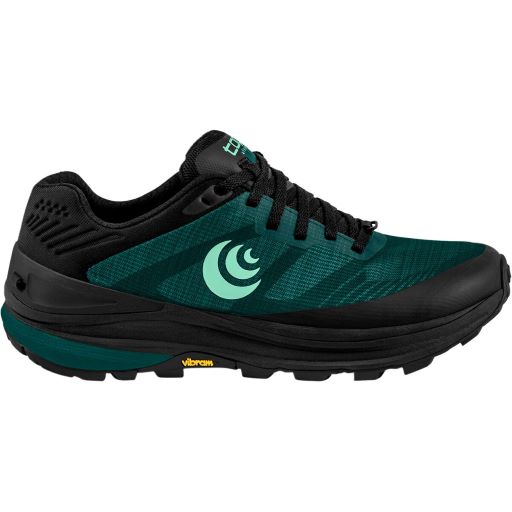
My lower body has fared better in the “low drop” Ultraventure Pro than it did in the “zero drop” Altra Lone Peak. My lower body had problems in Altra Lone Peaks on relatively easy trails, including strained calves and turned ankles. In contrast, I haven’t had either problem in the Ultraventure Pro. My feet get fatigued in them on harder hikes–and felt pretty battered after testing them on a gnarly section of Pennsylvania’s Mid State Trail. But my (flat) feet, (crooked) ankles, and (skinny) calves haven’t gotten injured and feel fine in Topos on moderate terrain.
Overall, the Topo Ultraventure Pro offers more support than “zero drop” trail running shoes, but less support than traditional hiking shoes.
Ultraventure Pro review: weight
Of course, hikers don’t buy trail runners for support. They buy them for weight savings.
By hiking standards, the Ultraventure Pro clearly qualifies as a lightweight trail running shoe.
My Ultraventure Pros (men’s size 12) weigh approximately 23 ounces per pair. That makes them more than a half pound lighter than the average pair of hiking shoes and more than a pound lighter than the average hiking boots. Compared to my trail runners, the Ultraventure Pro weighs the same as my Hoka Speedgoats (see my review) and slightly less than my old (past seasons) Altra Lone Peaks (see review) and On Cloudventures (see review).

That makes the Topo Ultraventure Pro a good pick for the fast-and-light crowd.
Ultraventure Pro review: comfort
Comfort is matter of fit, physiology, hiking style, and personal preferences. But there are several reasons why many hikers will find the Ultraventure Pro to be a comfortable trail running shoe:
- roomy toe box that accommodates swelling & gives toes room to wiggle
- more secure fit in the midfoot than other shoes with wide toe boxes
- moderate cushioning
- light stability (to prevent overpronation) & moderate arch support
- “low drop” offers a little more cushion & support than “zero drop” shoes
- lightweight mesh uppers for good ventilation and breathability

There’s a good chance that you’ll find this shoe comfortable as long as you’re not hiking anything too crazy. My toes, in particular, have felt better over the last two months as I’ve alternated hiking in the Topo Ultraventure Pros and Topo Trailventure 2 hiking shoes (which I consider the more comfortable of the two). I can see why some thru-hikers find the Ultraventure Pro more comfortable than the Altra Lone Peak, thanks to their added cushioning and light stability.
Ultraventure Pro review: weather protection
Hikers generally fall into one of two camps for keeping their feet as dry as possible. The first group hikes in waterproof-breathable footwear to keep out as much moisture as possible. The second group pairs merino-blend hiking socks with lightweight trail running shoes that will dry out quickly when they inevitably get wet.
The Ultraventure Pro fits into the second category.
Like most running shoes, it’s made for ventilation and breathability, not water resistance. Your feet will get wet quickly in this shoe if you’re hiking through dew, puddles, and moisture. (Just an hour ago, I tried–and failed–to outrun a spring thunderstorm in mine and got soaked.) At the same time, its mesh uppers should dry faster than waterproof trail runners and heavier hiking shoes. Topo also added drainage gills to dump any water and sweat that collects inside the shoe.
This shoe is not available in a waterproof style.
Ultraventure Pro review: traction
The Ultraventure Pro features Vibram Megagrip outsoles, which are known for their wet and dry traction.
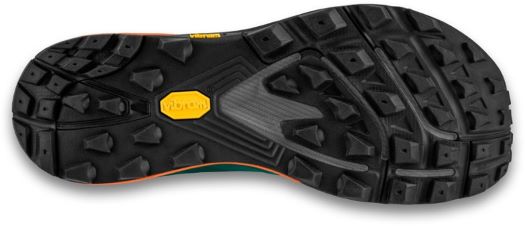
This particular Vibram outsole has widely spaced lugs to shed mud and snow. Those lugs have some sharp edges to give you a little bite in scree, gravel, and soft, steep slopes. It’s not as grippy on solid rock, but not bad, either. For me, this is a good outsole for moderate terrain and treads especially well on single track mountain bike trails in my area.
All in all, this is a nice, versatile tread pattern that plays pretty well on a range of trails. Let’s call this another check in the Pro column.
Ultraventure Pro review: durability
It’s too early for me to judge the Ultraventure Pro’s durabilty. Mine have held up well, but I haven’t hit 100 miles yet. That being said, my last pairs of Altra Lone Peaks and On Cloudventures already showed durability limitations at this mileage. So that’s a plus. And customer reviews from a range of sites suggest that Ultraventure Pro has good durability (by trail runner standards).
I’ll continue to update this post as my miles pile up. For now, though, this shoe shows good signs of holding up better than some trail running shoes that I’ve recently worn for hiking.
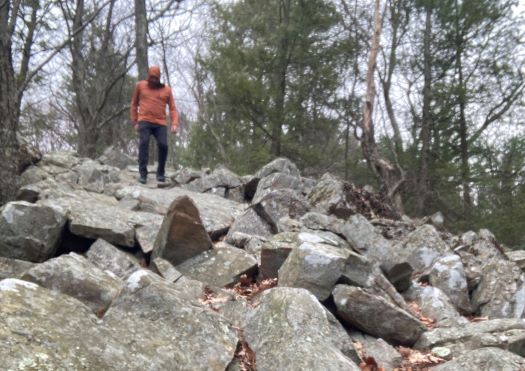
Ultraventure Pro review: fit
The “Topo Fit” features a wide toe box and a more secure fit in the heel and midfoot than Altra other brands with wide toe boxes. Overall, the fit favors hikers with standard to wide feet.
However, many podiatrists would argue that all people (including those with narrow feet) should be wearing footwear with wide toe boxes.
In my experience, the Ultraventure Pro does have a more secure fit than Altra. For me, the Altra Lone Peak had a sloppy fit that fell short on moderate to difficult trails. For example, my feet slid forward on moderately steep descents in Altras (which can injure your toes) and also slipped around in rock gardens. Hiking the same Pennsylvania trails in Topo Ultraventure Pros, my feet felt fairly locked in on moderately rocky trails with steep ups and downs. However, my feet did slip around in gnarly rock gardens on the boot-busting Mid State Trail. So that “secure fit” may be an obvious step up from Altras, but not as secure as hiking technical terrain in brands with a snug fit, such as Salomon or La Sportiva (narrower toe boxes).
I definitely recommend Topos to hikers who want a wide toe box.
Ultraventure Pro review: value
With a MSRP of $150, the Ultraventure Pro costs more than many trail runners. That’s $10 more than the Altra Lone Peak or La Sportiva Ultra Raptor II but $5 less than the new Hoka Speedgoat 5. (For $15 less, you also can get into the regular Ultraventure 2).
That price seems fair given this shoe’s premium features and solid reputation for quality.
Positive Review: Ultraventure Pro
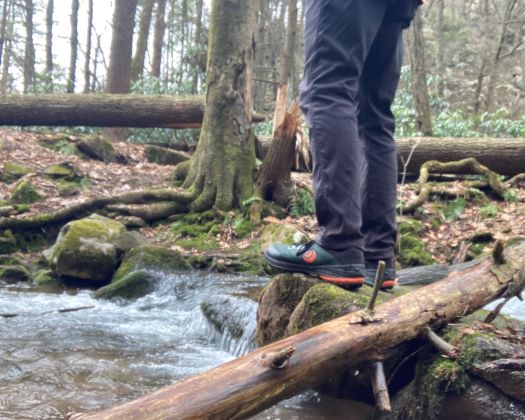
My Ultraventure Pro review is pretty positive, overall, after 7-8 test hikes. I’ll update this post as I learn more about the premium trail runner from Topo Athletic. At this point, though, I’m already comfortable recommending this shoe to fans of low drop trail runners, thru-hikers, and day hikers who prefer lightweight trail running shoes over more supportive hiking shoes.
Are you thinking about picking up a pair of Ultraventure Pros? If so, please consider purchasing them through the affiliate links above. Hiking Feet may receive a small commission (at no cost to you). Those commissions fund this site (and compensate me for the hundreds of unpaid hours I spent creating free content to help you buy the right hiking boots or shoes). If this site hooked you up, please consider hooking me up, too. Thanks, I appreciate it!
Either way, get out and hike!
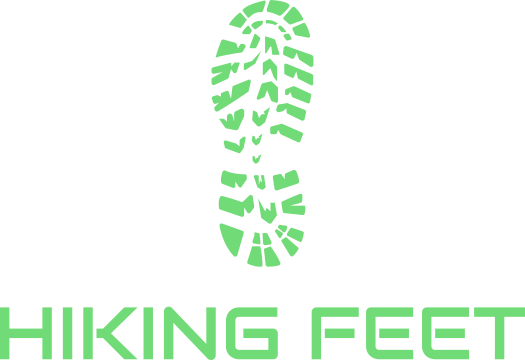
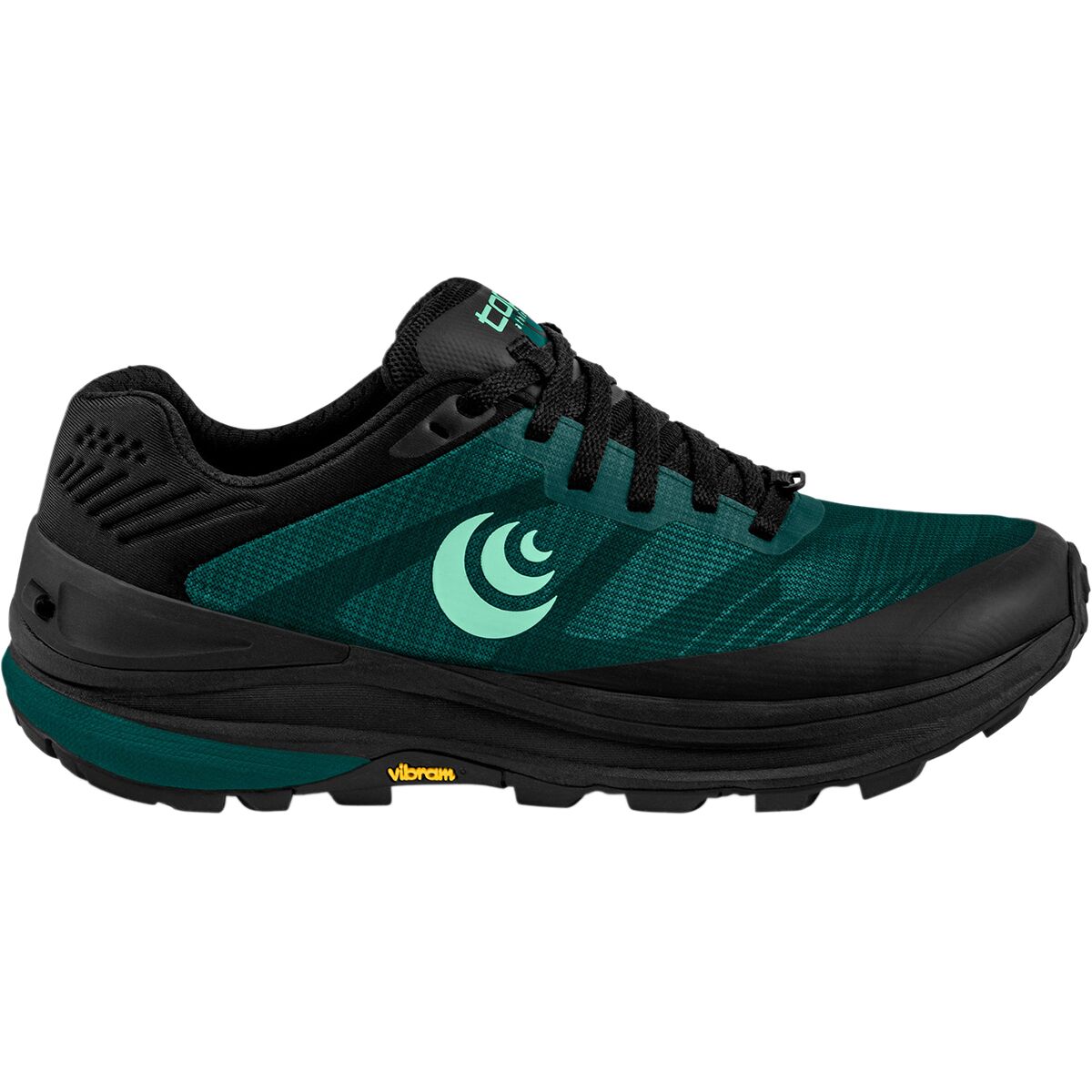
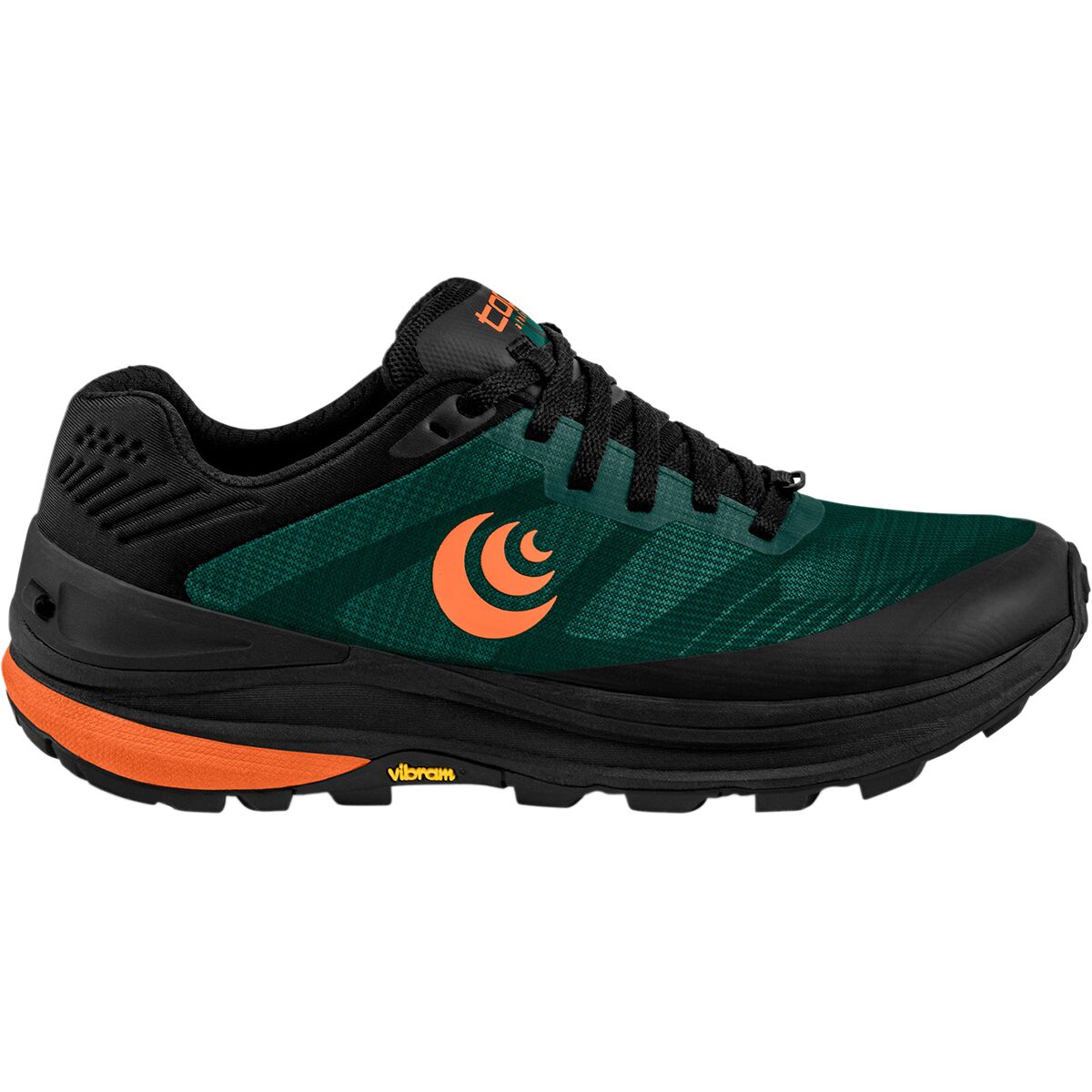
I have a pair of the Altra Lone Peaks in wide. They fit me well as I have bunions on the outside of my feet. Upon comparing them to my Altra Olympus in the same size (which barely fit me), the insole is the same width on both shoes…but the Lone Peak has more volume on the fabric toe box area, yielding a “wide” fit.
How is the forefoot width of the Topos compared to the Lone Peaks? I noticed that they currently do not offer them in wide.
Good question, Richard. I haven’t worn Lone Peaks in more than a year (and haven’t tried the 2022 version yet), so I can’t be 100% sure. But to me, the Ultraventure’s wide toe box does not feel quite as wide in the forefoot as the Altra Lone Peak. If you’re wearing the Lone Peak in wide, my hunch is that you’d need something slightly wider than the Ultraventure Pro for your bunion. That being said, I recommended the Topo Ultraventure Pro to another Hiking Feet reader with bunions a month ago, and he’s loved them.